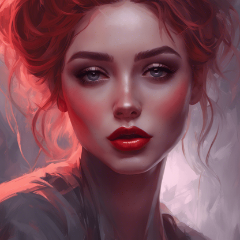Once upon a time, navigating the intricate world of 3D vision was much like wandering through an uncharted labyrinth. The terrain was teeming with obstructions, from the need for meticulous camera calibrations to the requirement for multiple images for creating a single 3D model. Yet, this landscape of geometric comprehension has always fascinated a group of intrepid explorers – Shuzhe Wang, Vincent Leroy, Yohann Cabon, Boris Chidlovskii, and Jerome Revaud. Together, they embarked on a mission to make 3D vision more accessible, and the result of their relentless pursuit for innovation birthed the DUSt3R platform.
Hosted on a GitHub repository by Naver, DUSt3R has come as a breath of fresh air, simplifying the labyrinth, and revolutionizing the world of 3D vision and geometric comprehension. In essence, DUSt3R is a beacon of light in the complex, often convoluted journey of generating a dense scene representation from just a pair of images. Before we delve into the workings of this transformative tool, let's briefly overview what it brings to the table:
DUSt3R is an easy-to-use Python-based platform that makes the process of achieving sophisticated 3D vision and geometric modeling a breeze.
It provides clear, step-by-step guidelines for installation, usage, and training, making it user-friendly even for those just beginning their journey in 3D vision.
The platform also offers access to pre-trained models ready for immediate deployment, saving you from the time-consuming process of training models from scratch.
- But what truly sets DUSt3R apart is its ability to generate 3D models from just two images. This simplicity underscores the breakthrough in geometric 3D vision technology that DUSt3R represents.
Now, you may be wondering, "What exactly is DUSt3R and why is it transformative in 3D vision?" The answers to these questions lie in the ground-breaking approach DUSt3R takes to simplifying complex geometric models and its potential to democratize 3D vision technology.
Before we move onto DUSt3R, DUSt3R isn't the only optino you can use the most powerful AI Image Generator. Use Anakin AI to generate any image with text prompts!


What Is DUSt3R and Why Is It Transformative in 3D Vision?
Imagine the power to generate a 3D model from just two images. Picture yourself standing in front of the Colosseum in Rome, capturing two images from slightly different angles, and then being able to generate a 3D model of the iconic monument, right on your computer. Sounds like magic, doesn't it? That's precisely what DUSt3R brings to the table.

Traditionally, creating a 3D model required multiple images, complex camera calibration, and information about the viewpoint poses. The process was complicated, time-consuming, and required a fair amount of expertise. But DUSt3R is changing all that.
By eliminating the need for camera calibration and viewpoint poses, DUSt3R has simplified the process of creating 3D models. It has democratized 3D vision technology, making it accessible to anyone with a pair of images and a computer. This transformative capability of DUSt3R is pushing the boundaries of what's possible in the field of 3D vision.
How Does DUSt3R Work?
The brilliance of DUSt3R lies not just in what it does, but how it does it. Built on Python, it provides an intuitive, user-friendly platform that even novice users can navigate with ease.

To get started, users need to clone the DUSt3R repository and create an environment using Conda, a popular package and environment manager for Python. The platform provides detailed instructions for this process, ensuring that even those new to Python can get started without difficulty.
Once the environment is set up, users can download one of the pre-trained models provided by DUSt3R. These models, trained on a subset of the CO3Dv2 dataset, are ready for immediate deployment. Users can simply load their image pairs, perform inference, and visualize the reconstruction. The platform provides sample Python code for each of these steps, taking users by the hand and guiding them through the process.

For those eager to train their own models, DUSt3R provides a comprehensive guide. From downloading and preparing the dataset to setting the hyperparameters, the guide covers every step in the training process. Users can even download the pre-trained CroCo v2 checkpoint, providing a solid starting point for further training.
The power of DUSt3R doesn't end there. Users can train DUSt3R for different resolutions and with different configurations, tailoring the platform to their specific needs. The platform provides the command-line arguments for each setting, taking the guesswork out of the process. The "Our Hyperparameters" section even provides the hyperparameters used for training the models in the paper, enabling users to replicate the creators' results if desired.
In a nutshell, DUSt3R has transformed the once daunting labyrinth of 3D vision into a navigable path, broadening the horizons of what's possible in this exciting field. Markdown

Bringing 3D Vision to Real-World Applications
Unquestionably, DUSt3R isn't just a theoretical marvel. Beyond its groundbreaking approach to 3D vision, the practical applications of this tool cannot go unnoticed. From dominating the gaming industry and reinventing the field of interior design to transforming the world of virtual reality, DUSt3R's potential knows no bounds.
Gaming Industry: In an industry where realism and immersion are paramount, DUSt3R is a game-changer. Creators and designers can leverage this platform to add a next-gen layer of intrigue and engagement. With just pair of images, they could recreate realistic geographical landscapes, historical monuments, or fantasy realms, setting the stage for an immersive gaming experience.
Interior Design: DUSt3R could dramatically change the face of interior design. Imagine being able to generate a 3D replica of a room with just two images! Designers could use this capability to experiment with various styling and decorating ideas, assessing their aesthetic and visual balance in 3D prior to the actual implementation.
Virtual Reality: Like the gaming industry, VR greatly benefits from realistic, immersive experiences. DUSt3R could enhance VR applications, allowing developers to create impressively realistic 3D environments from simple images.
Furthermore, possibilities extend even to the realms of geology, astronomy, architecture, and beyond. The platform's potential applications are as expansive as the thirst for 3D vision technology in our rapidly evolving technological world.
So, How Can You Start?
Getting started with DUSt3R is a breeze, thanks to its detailed documentation and friendly community of developers. Here are a few simple steps to get you rolling:
- Browse through the DUSt3R GitHub Repository and get acquainted with its structure and principles.
- Follow the provided instructions to clone the repository and create your own DUSt3R environment using Conda.
- Choose whether you want to start from scratch and train your model or make use of one of the pre-trained models for immediate deployment.
- Once you've decided your route, follow the relevant guide to get started.
- Don't hesitate to reach out to the DUSt3R community if you run into any obstacles or are in need of guidance.
Beofore we move on to the conclusion, DUSt3R isn't the only optino you can use the most powerful AI Image Generator. Use Anakin AI to generate any image with text prompts!


Final Thoughts
The advent of DUSt3R marks a major breakthrough in 3D vision technology. Its ability to generate complex geometric models from a mere two images is proof that we're standing on the cusp of a new era in geometric 3D modeling. Whether you're a seasoned tech professional or a passionate seeker of cutting-edge technology, DUSt3R offers an engaging, insightful journey into the incredible world of 3D vision.
From gaming and interior design, to VR applications and beyond, the captivating world of 3D vision brought to life by DUSt3R is waiting to be explored. So why wait? Be a part of this technological revolution and embark on your journey with DUSt3R today.

In the future as we watch this technology unfold, one thing remains certain - the labyrinth of 3D vision has been simplified. Thanks to the pioneering work of Shuzhe Wang, Vincent Leroy, Yohann Cabon, Boris Chidlovskii, and Jerome Revaud, the world of geometric comprehension has forever been changed. DUSt3R, it seems, has rewritten the map.



